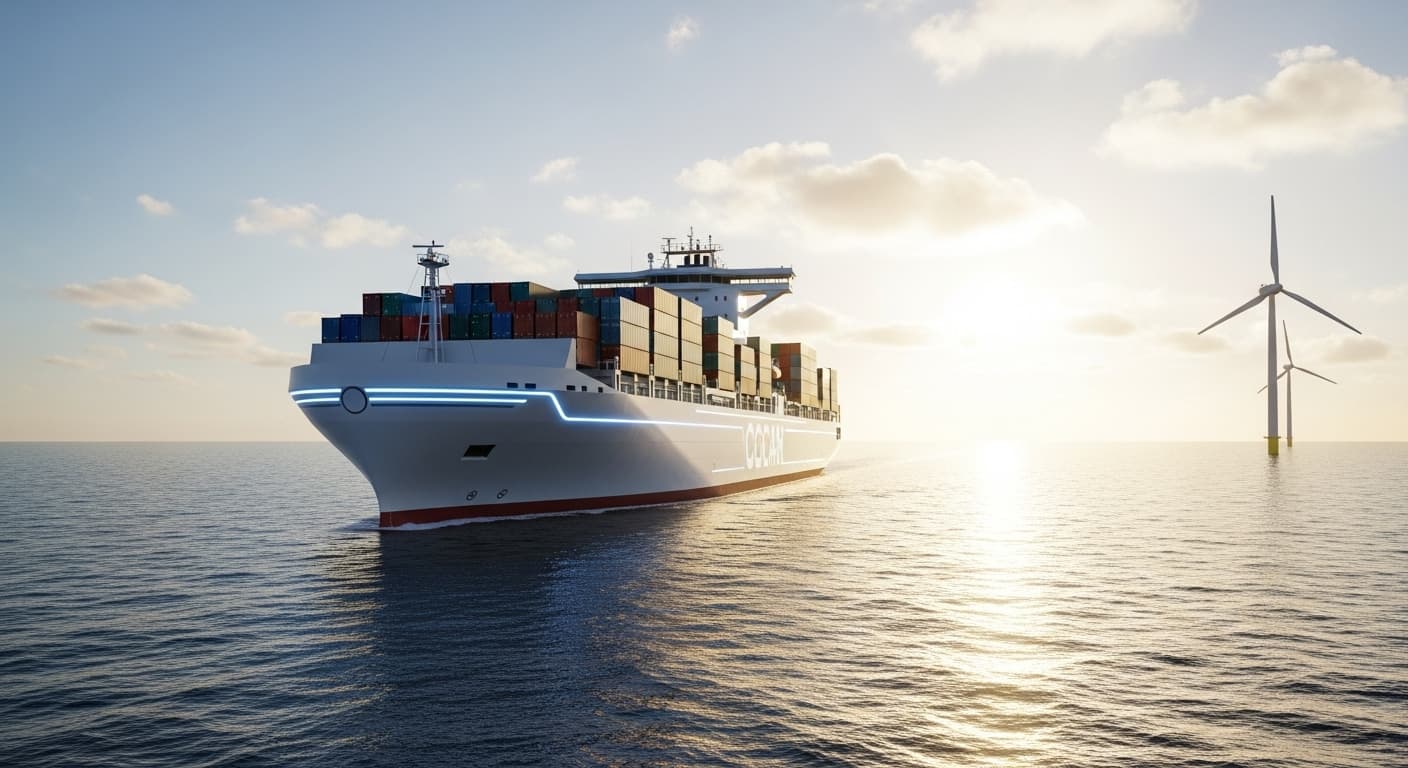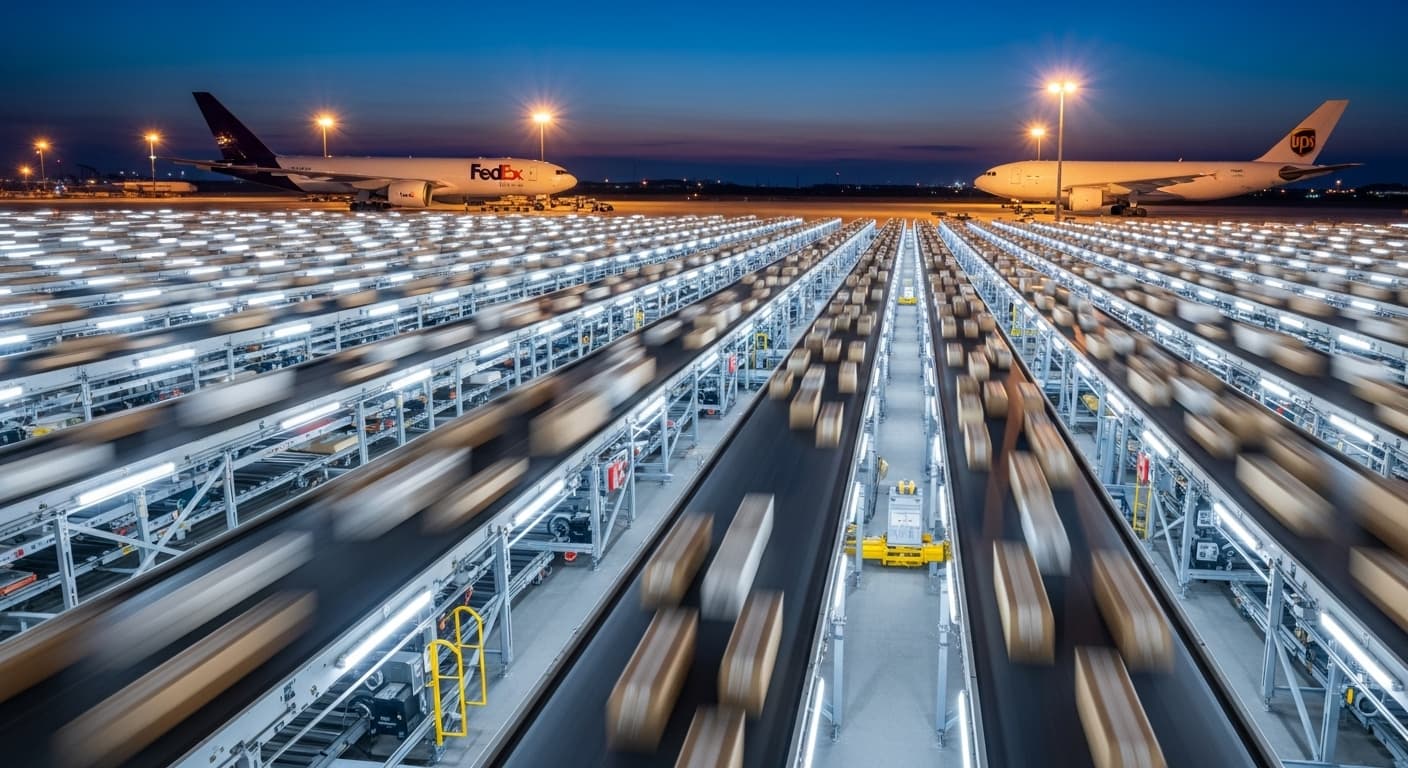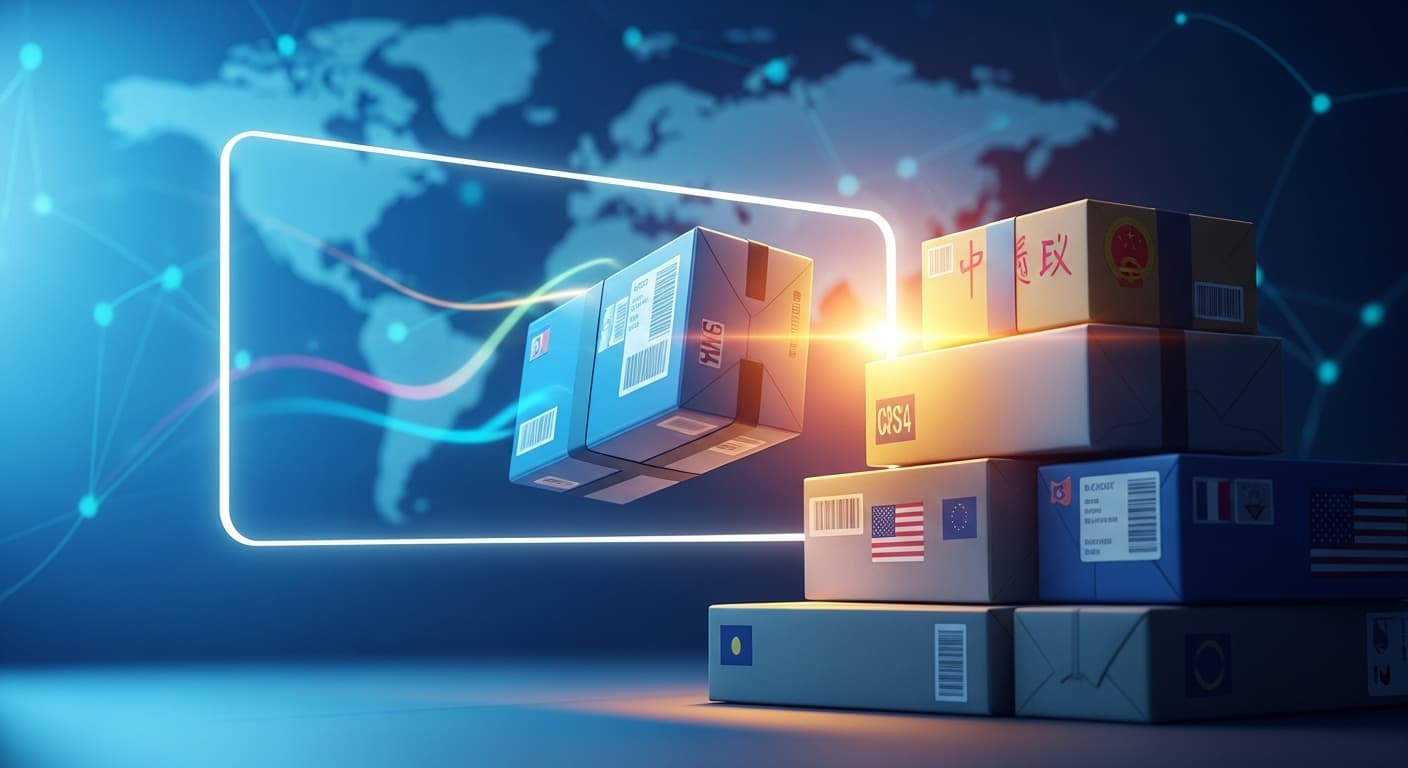
The global shipping industry is undergoing a historic transformation toward sustainable operations
Executive Summary
The international shipping industry stands at the threshold of a revolutionary transformation as global environmental regulations drive unprecedented changes in maritime operations. This comprehensive analysis examines emerging decarbonization frameworks, alternative fuel technologies, and strategic implications for logistics professionals navigating the future of sustainable shipping.
Global Maritime Decarbonization: Navigating the Industry’s Sustainable Future
(可持续包装的战略革命:全球物流运营的变革)
The international shipping industry is experiencing its most significant transformation since the advent of containerization. As environmental regulations tighten worldwide and sustainability becomes a competitive advantage, maritime transportation is rapidly evolving toward carbon-neutral operations that will reshape global logistics.
With shipping accounting for approximately 3% of global greenhouse gas emissions and handling over 90% of international trade, the industry’s environmental transformation affects every aspect of global commerce. Understanding these changes is crucial for logistics professionals, supply chain managers, and businesses dependent on international shipping.
The Global Push for Maritime Environmental Standards
International maritime organizations and regional authorities are implementing comprehensive environmental frameworks that establish new standards for shipping operations worldwide.
International Maritime Organization (IMO) Leadership
The International Maritime Organization continues to lead global efforts in establishing unified environmental standards for international shipping:
Global Fuel Standards and Emissions Targets
- Well-to-Wake Measurement: Comprehensive emissions tracking from fuel production through combustion
- Progressive Targets: Annually tightening greenhouse gas intensity requirements
- 2030 Milestone: 20% emissions reduction compared to 2008 baseline levels
- 2050 Objective: Net-zero emissions alignment with global climate goals
Economic Incentive Mechanisms
Modern regulatory frameworks incorporate market-based measures to drive environmental improvement:
- Carbon Pricing Systems: Economic incentives for emissions reduction through pricing mechanisms
- Compliance Flexibility: Multiple pathways for achieving environmental targets
- Technology Neutrality: Focus on emissions outcomes rather than mandating specific technologies
- Global Coordination: Unified standards preventing regulatory fragmentation
Regional Environmental Initiatives
European Union Maritime Regulations
The EU continues advancing comprehensive maritime environmental policies:
- EU Emissions Trading System: Integration of shipping into established carbon markets
- FuelEU Maritime: Progressive requirements for renewable and low-carbon fuels
- Port State Control: Enhanced monitoring and enforcement at EU ports
- Green Shipping Corridors: Dedicated routes for testing zero-emission shipping technologies
Asia-Pacific Sustainability Developments
Major Asian maritime hubs are implementing complementary environmental initiatives:
- Singapore Green Finance: Sustainable shipping finance mechanisms and incentives
- Japan Hydrogen Initiative: Investment in hydrogen and ammonia fuel technologies
- South Korea Innovation Programs: Government support for alternative fuel vessel development
- Port Infrastructure Modernization: Shore power and emission reduction facilities
Alternative Fuel Technologies Driving Industry Transformation
The shipping industry is rapidly developing and deploying alternative fuel technologies that enable substantial emissions reductions while maintaining operational efficiency.
Leading Alternative Fuel Solutions
Methanol and Ammonia Applications
These alternative fuels are gaining significant commercial traction:
Green Methanol Benefits:
- Compatibility: Works with modified conventional engines
- Infrastructure: Relatively straightforward bunkering and storage requirements
- Safety Profile: Familiar handling procedures for maritime crews
- Production Scaling: Rapidly expanding renewable methanol production capacity
Green Ammonia Advantages:
- Energy Density: High energy content enabling long-distance shipping
- Zero Carbon Combustion: Produces only nitrogen and water when burned
- Production Infrastructure: Leverages existing ammonia production and distribution networks
- Storage Efficiency: Established methods for safe ammonia storage and handling
Hydrogen and Fuel Cell Technologies
Advanced hydrogen applications are showing commercial promise:
- Direct Hydrogen Use: Compressed and liquid hydrogen for primary propulsion
- Fuel Cell Integration: Hydrogen fuel cells for auxiliary power and hybrid systems
- Production Synergies: Integration with renewable energy production facilities
- Technology Maturation: Rapid advancement in marine-specific hydrogen technologies
Biofuels and Synthetic Fuel Options
- Advanced Biofuels: Second and third-generation biofuels from waste and sustainable sources
- Drop-in Compatibility: Fuels that work with existing vessel engines and infrastructure
- Synthetic Fuel Development: Power-to-liquid technologies producing carbon-neutral synthetic fuels
- Sustainability Certification: Robust verification systems ensuring genuine environmental benefits
Technology Investment and Development Trends
Industry Investment Patterns
The maritime sector is experiencing unprecedented investment in clean technologies:
- Venture Capital Involvement: Significant private investment in maritime clean technology startups
- Shipbuilder Innovation: Major shipyards developing alternative fuel vessel designs
- Fuel Supplier Partnerships: Strategic alliances between shipping companies and alternative fuel producers
- Technology Acceleration: Collaborative development programs reducing time-to-market for new solutions
Infrastructure Development Requirements
Successful alternative fuel adoption requires comprehensive infrastructure investment:
- Production Facilities: Large-scale alternative fuel production plants at strategic locations
- Bunkering Infrastructure: Specialized storage and distribution facilities at major ports
- Safety Systems: Enhanced safety protocols and equipment for new fuel types
- Crew Training: Comprehensive education programs for alternative fuel operations
Economic Impact and Business Model Evolution
The transition to sustainable shipping creates new economic dynamics and business opportunities throughout the maritime industry.
Cost Considerations and Financial Planning
Alternative Fuel Economics
Understanding the financial implications of sustainable shipping is crucial for strategic planning:
Current Cost Premiums:
- Fuel Price Differentials: Alternative fuels currently cost 2-4 times more than conventional marine fuel
- Infrastructure Investment: Significant upfront costs for alternative fuel systems and modifications
- Operational Adjustments: Training, certification, and procedure updates for new fuel types
- Technology Integration: Costs associated with implementing new fuel technologies
Long-Term Economic Benefits:
- Operational Efficiency: Many alternative fuel systems improve overall vessel efficiency
- Regulatory Compliance: Avoiding penalties and restrictions associated with high-emission operations
- Customer Preference: Growing market demand for sustainable shipping options
- Future-Proofing: Early adoption providing competitive advantages as regulations tighten
Investment Opportunities and Market Development
Green Shipping Finance
Financial markets are rapidly developing products supporting sustainable shipping:
- Green Bonds: Dedicated financing for environmental shipping projects
- Sustainability-Linked Loans: Financing with rates tied to environmental performance
- Carbon Credit Markets: Revenue opportunities from superior environmental performance
- ESG Investment: Environmental, Social, and Governance factors driving capital allocation
Technology Investment Returns
- Innovation Leadership: Early technology adoption creating competitive advantages
- Market Differentiation: Environmental performance becoming key customer selection criteria
- Operational Excellence: Efficiency improvements reducing overall operating costs
- Partnership Opportunities: Collaboration with technology providers and fuel suppliers
Strategic Implications for Logistics Professionals
The maritime industry’s environmental transformation creates both challenges and opportunities for logistics professionals and supply chain managers.
Supply Chain Sustainability Integration
Carbon Accounting and Transparency
Modern supply chains require comprehensive environmental tracking:
- End-to-End Visibility: Complete carbon footprint tracking from origin to destination
- Real-Time Monitoring: Advanced systems providing immediate emissions data
- Customer Reporting: Transparent communication of environmental impact to clients
- Regulatory Compliance: Meeting increasing disclosure requirements for supply chain emissions
Service Provider Selection Criteria
Environmental performance is becoming a critical factor in logistics partnerships:
- Emissions Performance: Evaluating shipping lines based on environmental efficiency
- Technology Investment: Assessing carriers’ commitment to sustainable technology adoption
- Compliance Record: Reviewing environmental compliance history and practices
- Future Readiness: Evaluating partners’ preparation for evolving regulations
Operational Adaptations and Best Practices
Route and Mode Optimization
Sustainable logistics requires sophisticated optimization strategies:
- Efficiency Maximization: Route planning optimizing for both cost and environmental impact
- Modal Integration: Combining maritime transport with other sustainable transportation modes
- Cargo Consolidation: Maximizing vessel utilization to reduce per-unit emissions
- Port Selection: Choosing ports with advanced environmental infrastructure and services
Technology Integration and Innovation
- Digital Optimization: AI and analytics for fuel efficiency and emissions reduction
- Predictive Analytics: Forecasting environmental costs and regulatory changes
- Automation Benefits: Automated systems improving both efficiency and environmental performance
- Data Integration: Connecting environmental data with operational and financial systems
Regional Market Developments and Opportunities
Different regions are developing unique approaches to maritime sustainability, creating diverse opportunities and considerations for logistics professionals.
North American Sustainability Initiatives
Technology and Innovation Focus
North American markets emphasize technological solutions and innovation:
- Biofuel Development: Significant investment in sustainable biofuel production
- Port Electrification: Infrastructure investment in shore power and emission reduction
- Research Partnerships: Collaboration between industry, universities, and government
- Voluntary Programs: Industry-led initiatives for environmental improvement
Market Opportunities:
- Technology Leadership: Opportunities for early adoption of American-developed technologies
- Green Logistics Services: Growing demand for sustainable shipping options
- Infrastructure Investment: Participation in alternative fuel infrastructure development
- Partnership Development: Collaboration opportunities with technology innovators
European Leadership in Regulation and Standards
Comprehensive Regulatory Framework
Europe continues leading global maritime environmental policy:
- Mandatory Requirements: Binding regulations creating clear compliance obligations
- Economic Incentives: Market mechanisms rewarding superior environmental performance
- Technology Support: Government funding for clean shipping technology development
- International Coordination: Leading efforts to establish global environmental standards
Strategic Considerations:
- Compliance Planning: Preparation for increasingly stringent European regulations
- Technology Adoption: Early implementation of technologies meeting European standards
- Market Access: Environmental performance affecting access to European markets
- Competitive Advantage: Superior environmental performance creating market differentiation
Asia-Pacific Innovation and Growth
Technology Development and Implementation
Asian markets are rapidly advancing maritime sustainability:
- Alternative Fuel Production: Major investment in hydrogen, ammonia, and methanol production
- Port Infrastructure: Advanced environmental infrastructure at major Asian ports
- Shipbuilding Innovation: Asian shipyards leading development of alternative fuel vessels
- Government Support: Substantial government investment in sustainable shipping technologies
Future Outlook and Industry Transformation
The maritime industry’s environmental transformation will accelerate over the coming decade, creating new opportunities and requirements for logistics professionals.
Technology Maturation and Cost Reduction
Alternative Fuel Cost Trajectories
Economic trends favor rapid adoption of sustainable shipping technologies:
- Scale Economics: Increasing production volumes reducing alternative fuel costs
- Technology Improvement: Continuous innovation improving efficiency and reducing costs
- Infrastructure Development: Expanding alternative fuel infrastructure reducing distribution costs
- Market Competition: Multiple technology options creating competitive pressure on pricing
Performance Enhancement
- Efficiency Gains: Alternative fuel technologies often providing superior operational efficiency
- Reliability Improvement: Maturing technologies achieving commercial reliability standards
- Integration Optimization: Better integration of alternative fuel systems with vessel operations
- Maintenance Reduction: Some alternative fuel systems requiring less maintenance than conventional engines
Market Evolution and Customer Expectations
Customer Demand Drivers
Growing customer requirements for sustainable shipping:
- Corporate Sustainability: Businesses requiring sustainable supply chain partners
- Regulatory Compliance: Customers needing to meet their own environmental requirements
- Brand Protection: Companies protecting brand reputation through sustainable practices
- Competitive Differentiation: Environmental performance becoming key selection criteria
Service Innovation Opportunities
- Carbon-Neutral Shipping: Dedicated services offering verified carbon-neutral transportation
- Transparency Services: Enhanced tracking and reporting of environmental performance
- Sustainability Consulting: Advisory services helping customers optimize supply chain sustainability
- Green Logistics Integration: Comprehensive sustainable logistics solutions
Regulatory Evolution and Global Coordination
International Standards Development
Continued evolution toward comprehensive global environmental standards:
- Technology Standards: Development of international standards for alternative fuel systems
- Safety Protocols: Enhanced safety regulations for new fuel types and technologies
- Monitoring Systems: Advanced systems for tracking and verifying environmental performance
- Compliance Harmonization: Coordination between regional regulations and global standards
Future Regulatory Trends
- Scope Expansion: Extension of environmental regulations to smaller vessels and additional sectors
- Performance Requirements: Increasingly stringent emissions and efficiency requirements
- Economic Instruments: Broader use of market mechanisms for environmental policy
- Technology Incentives: Regulatory frameworks supporting technology innovation and adoption
Strategic Recommendations for Logistics Professionals
Successfully navigating the maritime industry’s environmental transformation requires proactive planning and strategic positioning.
Immediate Action Items
Assessment and Planning
Logistics professionals should begin comprehensive environmental assessment:
- Current Impact Evaluation: Assess current supply chain environmental performance
- Regulatory Mapping: Understand applicable and emerging environmental regulations
- Technology Options: Evaluate available and emerging sustainable shipping technologies
- Cost-Benefit Analysis: Analyze economic implications of various sustainability strategies
Partnership Development
- Carrier Relationships: Engage with shipping lines about environmental initiatives and capabilities
- Technology Providers: Explore partnerships with alternative fuel and technology companies
- Industry Collaboration: Participate in industry initiatives and knowledge sharing
- Customer Communication: Develop transparent communication about environmental performance
Long-Term Strategic Positioning
Competitive Advantage Development
- Early Adoption: Consider early adoption of sustainable shipping technologies and services
- Expertise Building: Develop internal expertise in sustainable logistics and environmental compliance
- Market Positioning: Position company as leader in sustainable logistics solutions
- Innovation Investment: Invest in technology and processes supporting environmental performance
Risk Management and Adaptation
- Scenario Planning: Develop strategies for multiple regulatory and market scenarios
- Flexibility Maintenance: Maintain operational flexibility to adapt to changing requirements
- Continuous Monitoring: Establish systems for tracking regulatory and technology developments
- Performance Measurement: Implement metrics for tracking environmental and business performance
Conclusion: Embracing the Sustainable Shipping Future
The global maritime industry’s environmental transformation represents both a challenge and an unprecedented opportunity for logistics professionals. While the transition requires significant adaptation and investment, it also creates new avenues for competitive advantage, customer value creation, and business growth.
Key Success Factors
Proactive Engagement
Success in the sustainable shipping era requires proactive engagement with environmental trends:
- Early Planning: Begin environmental planning and technology evaluation immediately
- Stakeholder Collaboration: Work closely with carriers, customers, and technology providers
- Continuous Learning: Stay informed about regulatory developments and technology advances
- Strategic Investment: Make targeted investments in sustainable logistics capabilities
Customer-Centric Approach
- Value Creation: Develop environmental services that create genuine customer value
- Transparency: Provide clear, accurate communication about environmental performance
- Innovation: Continuously innovate to meet evolving customer sustainability requirements
- Partnership: Collaborate with customers to optimize supply chain sustainability
Industry Leadership Opportunity
The maritime industry’s environmental transformation creates opportunities for logistics companies to demonstrate leadership and create competitive differentiation. Companies that embrace sustainable shipping early and effectively will be best positioned to succeed in the evolving global logistics landscape.
The future of international shipping is sustainable, and the transformation is already underway. By understanding these trends and taking proactive action, logistics professionals can turn environmental requirements into competitive advantages and business growth opportunities.
Advanced Logistics Solutions helps companies navigate the evolving landscape of sustainable shipping and environmental compliance. Our expertise in maritime logistics and environmental regulations enables clients to optimize their supply chains for both efficiency and sustainability. Contact us to learn how we can support your sustainable logistics initiatives.


